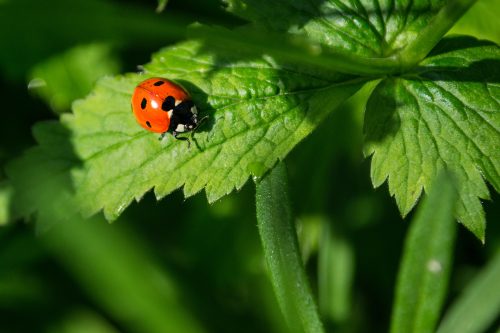Gardening is a hobby that you can spend a lifetime learning about. Seasons change, seeds fail or thrive, and just when you think you know it all, you realize how much there still is to learn. Direct Energy’s Gardening Series is a follow-along guide to embrace the beauty and challenges involved with being a gardener. As a craft that requires patience, creativity, and endurance, gardening can be enjoyed by those of all ages, and is one of the most satisfying ways to spend an early morning or late afternoon. Follow along as we show you how to begin, which herbs grow the best and other tips on how to plant a garden that will flourish under your care.
At times, gardening can become discouraging when we find our hard work has gone by the wayside as the result of unwanted pests. Holes appear, herbs are nibbled to the ground, plants simply don’t grow due to soil pests, and when we find our organic greens eaten to oblivion, we ask ourselves how to control garden predators and and keep them away without pesticides or insecticides.
But to garden organically is to know that pests will find you. You just need to have the knowledge on how to outsmart them, and what to plant in your garden to keep bugs away.
In some states pine trees discourage plum curculio on peaches, mustard flowers encourage a predator of cabbage loopers, and a parasite of the grape leaf hoppers loves wild blackberries. But what about the more general pests we find in all areas of the country, particularly in summer?
From keeping stink bugs out of your garden to adhering to crop rotation, this range of ideas will show you how to keep bugs from eating your vegetable garden, creating an organic balance in your garden that supports what you love, while getting rid of what you don’t.
1. Try Crop Rotation Every Year
Rotating your crops each year is an old farming practice that dates back hundreds of years. The concept here is pests that find their way to a particular plant one year won’t find that same crop in the same location the next year.
Diseases and soil pests including root knot nematode roundworms tend to stay in the soil unless predators wipe them out. If you plant the same crop or something within the same family each season, that pest won’t have a problem finding its target again.
If nematodes are your problem this year, be sure to plant something from a different plant family next year.
When practicing crop rotation and gardening trials and errors as a whole, you should keep a garden diary to keep track of what works, what’s planted and what could be done better next season.
2. Attract Spiders to Your Garden
Spiders are wonderful creatures that eat all sorts of insects. Some of them catch their prey with webs, while others hunt them. Certain plants can attract spiders and give them a safe place to live.
Hunting spiders prefer a closed-in, shadowy retreat close to the ground. A pile of mulch would be appealing to them, as would asters, petunias, polygoniums, sweet alyssum, and St. John’s Wort.
Orb spiders, on the other hand, prefer any location that is at least waist-high where sunlight reaches in which to weave their webs and lay their eggs. Tall irises, blackberries, and bell peppers plants make a great place for them to settle.
3. Grow Catnip for Stinkbugs
If stinkbugs are coming into your home and causing havoc, you’ll first want to seal up your home so they can’t get in. But it’s a sure bet that if they’re inside your home, they’ve invaded your garden, too.
Grow catnip in your herb garden. You can cut it off once it’s well established, and hang it upside down to dry. Once dried, crush it up and sprinkle it all over your beds.
4. Introduce Ladybugs to Eat Aphids & Other Pests
Ladybugs are harmless for your vegetable garden, but fierce warriors when it comes to eliminating the pests in your yard. They’re capable of eating up to 50-60 aphids per day, but will also consume mealy bugs, leaf hoppers, mites, and other soft-bodied insects and their larvae. It’s been shown in studies that ladybugs can eat as many as 5,000 in its lifetime!
To attract them to your garden, plant cosmos, sunflowers, yarrow, fennel, goldenrod, marigolds, and angelica. Dill and fennel are also great at attracting them.
Some plant nurseries also sell them live in small, breathable satchels. These are effective, and can be set free in your garden to get to work.
5. Plant Extra Parsley, Dill and Cilantro for Pest Eaters
Three of the single most beneficial herbs to plant in your pesticide-free garden and keep the bugs away are parsley, cilantro, and dill. They attract more beneficial pests to combat the unwanted pests than any other herbs.
The Swallowtail butterfly lays its eggs on parsley and cilantro, so its caterpillars love to eat them down to the stems.
Rather than trying to eliminate these beautiful creatures from your garden, provide extra herbs to support their life cycle. Zinnias also provide wonderful nectar for them.
There’s something so calming about seeing butterflies flutter around your garden. With more of our landscape being developed and habit being demolished, it’s nice to see the support of an environment for these special insects.


